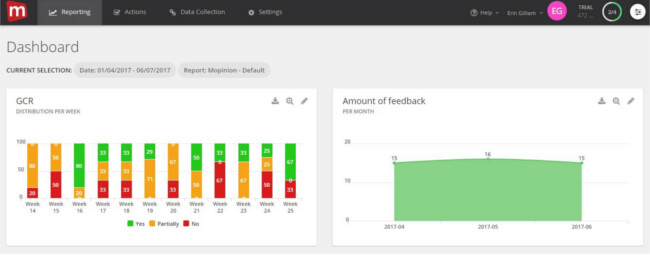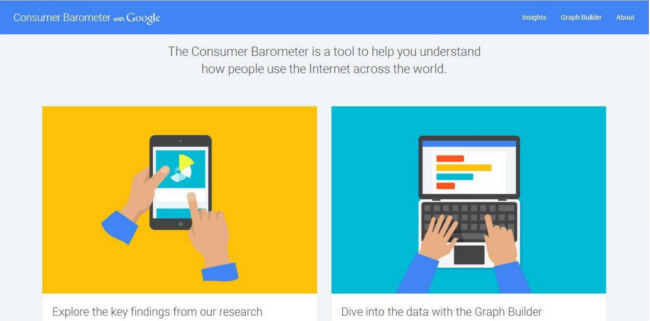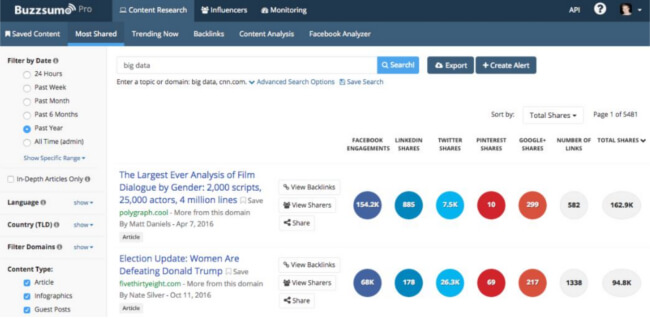Are you a startup in search of new avenues for growth? Then you’ll want to keep reading…because we’ve got the low-down on which types of growth hacking techniques you’ll need to achieve this growth. Each technique serves a different purpose and to achieve this purpose, your business will need the right tools in place.
From growth hacking techniques such as customer feedback to user testing and from email marketing to lead generation, there’s no doubt digital marketers have a lot on their plates when it comes to prioritising and selecting the right approach, including which tools aid in that approach. So we’ve made it easier for you… In this overview, we will analyse the different growth hacking techniques and tools that you can apply to achieve growth.
We’ve defined 6 growth hacking techniques in particular:
- Customer Feedback & Consumer Insight
- Traffic Generation
- User Testing
- Lead Generation
- Email Marketing
- Inbound Marketing
Keep in mind: Any good growth hacker knows that you shouldn’t restrict yourself to just one area of growth. Be sure to consider all types of growth hacking techniques (and tools that follow these techniques) and how you can use them collectively to grow your business.
Customer Feedback & Consumer Insights
Understanding your customers (on a level deeper than any web analytics tool can provide) is pivotal to having a successful digital business strategy. In other words, knowing what your customers want, how they make decisions online and how they are interacting with your brand can shape this strategy tremendously – so how do you access these insights?
We can extract these insights in two different ways depending on how ‘in-depth’ you want to go. Let’s start with the first growth hacking technique, customer feedback. There are several different customer feedback tools on the market that collect data from your customers, whether that’s via online feedback forms, surveys, reviews, etc. This feedback is gathered directly from your customer base and reflects their opinion about your brand and website.
Some examples of customer feedback tools include Mopinion, PollDaddy and WebEngage.

Source: Mopinion Feedback Analytics software
Alternatively, you can focus on another growth hacking technique: generic consumer insights. Tools in this area are often geared towards the ecommerce industry and collect insights from the perspective of an entire market. They are focused on insights collected from metadata level, such as how consumers search online, their purchase behaviour, device usage, etc. A good example of this is Consumer Barometer.

Source: Consumer Barometer
Traffic Generation
Traffic Generation is all about maximising engagement and relationships by inserting yourself in relevant conversations and sharing content amongst potential customers/visitors. Very critical to the growth of your company, tools that use this growth hacking technique help businesses establish a strong online presence. They also give you insight into how your competitors are performing in regards to incoming traffic and which parts of your website need optimising to achieve higher traffic levels.

Source: Colibri.io
Online communities, in particular, are a powerful source of traffic and can significantly aid in facilitating online engagement. This attributed to the fact that members of a community are encouraged to interact within the community and can do things like vote on an idea or provide a suggestion. Alternatively, online communities can provide a lot of insight from a customer service perspective. These communities provide a platform for members to indicate that they have encountered a problem on the website, which may be a problem shared by other users. And example of this is Colibri.
In addition to online communities, however, there are many other ways of generating traffic. Users can implement spy tools that allow them to research their competitors and gain insights into which traffic sources, text ads or banner ads they are using – e.g. MixRank. Alternatively there are tools more geared towards content promotion such as PayWithATweet that allow users to access your content only if they’ve tweeted or posted about it.
User Testing
User Testing techniques, otherwise known as user experience (UX) techniques, are very beneficial in terms of boosting user interaction. There are a variety of tools within this category that will help you achieve improved website usability as well as provide you with insight into how visitors experience your website or mobile app. These tools include heatmapping, A/B testing, session recording, event-tracking and design & wireframing tools.

Source: Clicktale
Heatmapping and session recording tools, for example, can show you how your visitors are interacting with your website based on factors such as clicks, scrolls and mouse movement. To use this growth hacking technique, tools such as Hotjar and Clicktale can be applied.
A/B Testing, on the other hand, is focused more so on testing different versions of websites and/or landing pages. Examples of these tools include Visual Website Optimizer (VWO) and Optimizely.
Lead Generation
Growing your customer base, is for obvious reasons, an important goal if you want to achieve growth, which is why many growth hackers choose to use various lead generation techniques. Tools that use this type of growth hacking technique are intended to help businesses improve in areas that will promote growth such as Search Engine Optimisation (SEO), Conversion Rate Optimisation (CRO) content visibility and of course, customer acquisition. As you might’ve guessed, this can cover a wide range of tools.

Source: LeadCrunch
However, lead gathering techniques are among the most popular amid startups who are looking to build up a list of prospects. This growth hacking technique is demonstrated using tools such as SalesForce, LeadCrunch and Lead Genius. Alternatively, in terms of SEO, tools such as Google Keyword Planner are also very helpful in making sure you score high in keyword rankings within digital content.
Email Marketing
Once you’ve gathered your leads, you’ll need a way of ‘reaching out’ to these prospects. That is where email marketing techniques come into play. A very effective and long withstanding growth hacking technique, email marketing tools are a great way of targeting both existing and potential customers with relevant content (such as blogs, newsletters, updates, etc).

Source: AWeber
Often considered ‘the grandparent of social marketing’, email marketing is still considered the most targeted and valuable channel for contacting potential customers. And what’s interesting about this field is that many marketers just kind of ‘stumble’ into it, which makes choosing the right tool all the more essential.
Some examples of well-known email marketing tools include MailChimp, CampaignMonitor and AWeber.
Inbound Marketing
Last but not least we have inbound marketing. For this growth hacking technique there are a lot of tools that are focused on bringing in new customers by way of relevant content production and sharing. Creating content that entices your readers can help you quickly build up trust among them, without having to fight for their attention (bonus!). And in addition to trust, these tools also help build awareness of your brand and what it has to offer. This includes introducing new solutions to your readers’ problems.

Source: BuzzSumo
Many inbound marketing tools have multiple capabilities. Take HubSpot, for example. This tool is not only capable of tracking and measuring blogging activities, social media marketing and email marketing, but it can also help you create landing pages and offers a content management system that assists you in optimising your content. There are also tools that serve as content discovery platforms, such as Outbrain. With these tools, companies can increase their reach in terms of readers – a great growth hacking technique.
Additional tools that use inbound marketing techniques include Inbound.org, BuzzSumo and Buffer.
Start growth hacking with these growth hacking techniques!
It’s important to remember that you shouldn’t limit your company to just one area of growth. A lot of the growth hacking techniques above can be used simultaneously and often complement each other.
For a full list of growth hacking tools, be sure to check out 35 Best Growth Hacking Tools for Startups.
Ready to see Mopinion in action?
Want to learn more about Mopinion’s all-in-1 user feedback platform? Don’t be shy and take our software for a spin! Do you prefer it a bit more personal? Just book a demo. One of our feedback pro’s will guide you through the software and answer any questions you may have.







